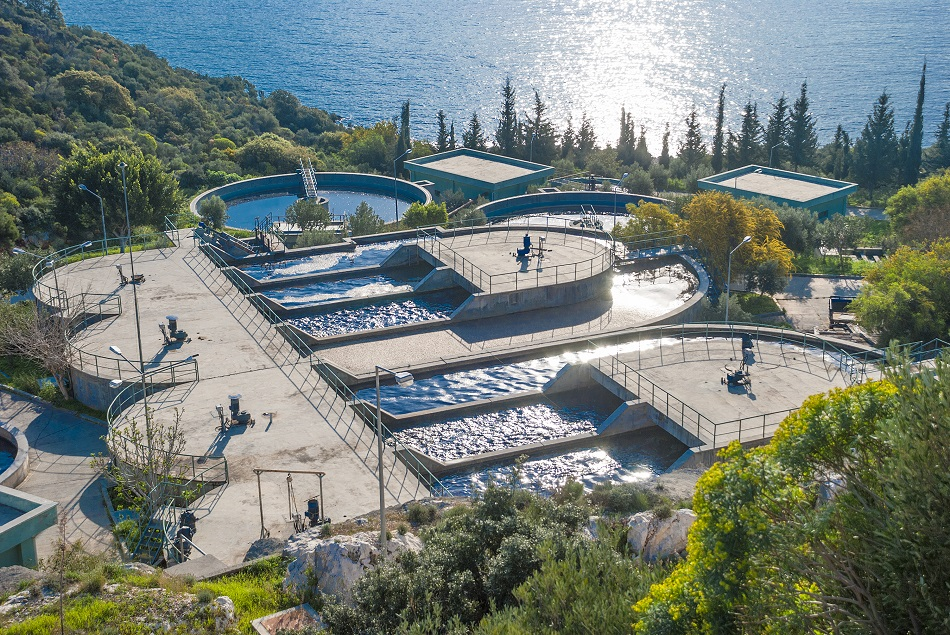Mar 5 2008

Image Credit: Goltsynsky/Shutterstock.com
When a water supplier takes untreated water from places such as rivers or reservoirs, the water often contains impurities such as dirt, tiny pieces of leaves, trace amounts of certain contaminants and other organic matter. Water purification, which is a process that is also referred to as drinking water treatment, describes the removal of these impurities from the water. The drinking water treatment process involves a number of steps. Depending on the type of impurities discovered, the number and type of treatment processes that are performed will vary.
Different water suppliers use different treatment processes to remove contaminants from drinking water. These treatment processes are organized into a series of processes. The most commonly employed treatment processes include filtration, flocculation and sedimentation, and disinfection for surface water. Some treatment plants also employ ion exchange and adsorption processes.
Flocculation
Flocculation is an essential water treatment process that combines or coagulates suspended colloidal particles and other water contaminants into larger particles. These particles can then be removed from the water through solid-liquid separation.
The three different types of flocculants that can be used for flocculation include inorganic coagulants, synthetic polymeric flocculants and composite flocculants. The most commonly used inorganic coagulant for flocculation is polyaluminum chloride (PAC) or its polymer; however, inorganic coagulants are associated with certain limitations including the formation of small flocs, as well as the requirement of high treatment doses in order to achieve adequate water purification. Commonly used synthetic organic polymeric flocculants include polyethyleneimine, polyvinylpyridinium salt and polyacrylamide, as well as their respective derivatives.
In an effort to reduce the potential toxicity that can occur following the secondary pollution of flocculants into drinking water supplies, several alternative flocculants have been developed. For example, the combination of both polysilicate aluminum magnesium (PSAM) and cationic polyacrylamide (cPAM) has demonstrated a 98% removal efficiency of water samples, with particularly high capabilities in reducing turbidity and removing colors from the samples.
Filtration
Filtration is used by many water treatment facilities to remove a wide range of particulate matter ranging from clays and silts to other natural organic matter particles in the water. The filtration process involves the purification of the water, while simultaneously allowing for an improved effectiveness of disinfection procedures.
Some of the most widely used water filtration methods include distillation, deionization, ion exchange and reverse osmosis. Furthermore, activated carbon, mechanical, ozone and granulated carbon filters are often common water filtration devices. Recent advancements in the development of silver nanoparticles (AgNPs), which are well-known for their antibacterial properties, have inspired researchers to examine the potential incorporation of AgNPs into activated charcoal for water filtration purposes.
Disinfection
Water is frequently disinfected before it enters the distribution system. The purpose of disinfection is to ensure that potentially dangerous microbes are destroyed. The disinfection of water can be achieved by adding low levels of either chlorine or chloramine to the water. Drinking water can also be treated with ultraviolet (UV) radiation.
Chlorination is a type of water disinfection process that involves the addition of chlorine, which can be in the form of compressed elemental gas, sodium hypochlorite solution (NaOCl) or solid calcium hypochlorite (Ca(OCl)2). Although high concentrations of these chlorine compounds can be toxic, the water disinfection process applies chlorine at low concentrations that remain effective at eliminating unwanted microorganisms while also maintaining safe levels for human consumption. Chloramination is another type of water disinfection process that involves the addition of chloramine to drinking water supplies.
Ion exchangeIon exchange (IE) processes are used to eliminate inorganic contaminants if they cannot be adequately destroyed by filtration or sedimentation. IE can be used to treat hard water, or in an effort to remove harmful contaminants like arsenic, chromium, excess fluoride, nitrates, radium, and uranium from water supplies.
When these types of contaminants are dissolved in water, they typically form ions that can have either a positive or negative charge. During IE, both the contaminant to be removed and the exchanged substance should have the same electrical charge. Water that is being treated by IE undergoes a water softening process in which the untreated water will pass through a purifying media that allows for the unwanted ions to be exchanged for desired cations such as calcium, magnesium, iron or manganese.
Absorption
The absorption process that is used to purify water utilizes activated carbon. Unwanted coloring, taste, organic contaminants and odor-causing compounds often attach themselves to the surface of activated carbon, thereby allowing for their removal from drinking water.
Sources and Further Reading
- Ma, J., Wang, R., Wang, X., Zhang, H., Zhu, B., Lian, L., & Lou, D. (2019). Drinking water treatment by stepwise flocculation using polysilicate aluminum magnesium and cationic polyacrylamide. Journal of Environmental Chemical Engineering 7(3). DOI:10.1016/j.jece.2019.103049.
- "Water Filters: The Many Ways to Purify Your Drinking Water” – Allergy & Air
- McGillicuddy, E., Morrison, L., Cormican, M., Dockery, P., & Morris, D. (2018). Activated charcoal as a capture material for silver nanoparticles in environmental water samples. Environment 645; 356-362. DOI: 10.1016/j.scitotenv.2018.07.145.
- “Disinfection with Chlorine” – Centers for Disease Control and Prevention
This article was updated on 29th January, 2020.